*This article has not been solicited by the business owner nor compensated. I simply appreciate these businesses and their space.
What makes a great neighbourhood? For me it’s walkability, green spaces, and cafes. (Maybe that’s not the complete list, but those 3 are certainly critical – more on this in a future article.)
I’ve travelled quite a bit and experienced quite a variety of spaces. I’ve moved a lot too, and each time it’s been important to get out and explore my neighbourhood: find the daily essentials and build a routine. For me this usually means a cafe to perch at and a park for my dogs. I got lucky with my current home, my neighbourhood (Leslieville, Toronto) is brimming with beautiful parks and yards, and absolutely overflowing with cafes. I’ve made a point to visit them all, but there is one that stands apart from the rest.
About a 10 minute walk away is a combined garden centre and cafe: a hybrid typology. It’s a beautiful space with great planning and design, and the more I’ve thought about it, the more I realize how brilliant this business model is.
The Businesses:
Name: Queen Garden Cafe
Industry: Food & Beverage
Location: Toronto, Canada
Instagram: Queen Garden Cafe
Name: Queen Garden Centre
Industry: Garden Centre & Landscape Design
Location: Toronto, Canada
Websites: https://queengarden.ca
Instagram: Queen Garden Centre
Where they shine:
- The Vibe
- Authentic & temporal
- Business Takeaways
- Better location and reduced overhead
- Increased foot traffic and lead generation
- Differentiation and lower start-up costs
- Design
- Spatial planning
- Biophilia
- Pet-friendly details
The Vibe
The Queen Garden Cafe is a peaceful place to relax and unwind. It’s a laid back atmosphere that provides an escape from the buzz and rhythm of the city just steps away. The beverage menu features drip coffee, espresso drinks, coffee and tea lattes, and seasonal features. The food selections include pastries, cookies, muffins, sweet and savoury scones, and seasonal features.
Authentic & temporal
The cafe and garden centre are set up on a vacant lot – there are no permanent structures on the land. Everything needed for the two businesses is created in temporary structures. The beauty in this is it lends a feeling of temporality and exclusivity, like a farmer’s market or pop up shop: the moment is fleeting. It reminds me of a nomadic restaurant I visited in New York City, that took up an entire parking lot for a month and then vanished without leaving a trace. Nothing here feels forced – the space is constantly evolving as a reflection of inventory and the seasons.
In spring the garden is in full bloom, and by the end of summer it’s a leafy green oasis. In autumn the garden centre sells pumpkins and firewood, which set the tone for (Canadian) Thanksgiving and Halloween. As temperatures drop, heat lamps and fire pits are added for warmth. The sounds and smells of the crackling fire add to the experience.
From late November/early December, the space will be filled with Christmas trees and wreaths for sale, and further decorated with Christmas lights and coloured ornaments. And in the spring, Easter eggs in pastel colours will hidden amongst the trees.
Take a look at how the space changes through the seasons below:
Business Takeaways
You’ve seen how captivating the space is, but what else makes this place so special? For me this is a great case study of how design thinking leads to smart business decisions. There are a lot of ways that businesses can give and take with each other that can be revealed through creative analysis in the planning stages.
There is a symbiotic relationship between the two businesses, neither would thrive without the other. This is called a hybrid typology, where two or more businesses serving different functions share one space. It’s hard to tell where one business ends and the other begins, and that is the beauty of it.
Better location and reduced overhead
Key considerations of new business owners are of course costs. Rent, utilities, equipment, and inventory can represent a significant investment and can become cost prohibitive. And of course we all know the adage “location, location, location.” Choosing the right location can shape the future of a business by providing exposure to new customers.
By teaming up, these two businesses have turned a potential weakness as individuals into a collective strength. Sharing the cost of rent across the two businesses allows them to situate themselves in a prime urban location that might have been out of reach had they set up independently from one another. This is a huge benefit in Toronto where the real estate market is always hot.
Increased foot traffic and lead generation
This is a benefit that the cafe typology gives to the garden centre. Successful cafes thrive in bustling urban environments, and attract a great amount of foot traffic throughout the day. Garden centres on the other hand are usually sleepy, low traffic environments, located on the outskirts of a city. The collaboration between the two businesses makes this the liveliest garden centre I’ve ever seen.
If I had to attribute a reason for this, I’d say it’s because popularity grows exponentially. If you see a lot of people lingering in a space, or lined up for coffee, you deduce that it must be good – and so you decide to join in the fun. Once you’re inside you survey the territory and explore. In this way every cafe patron becomes a potential lead for the garden centre, waiting to be converted.
Differentiation and lower start-up costs
A quick survey of Google Maps and I’ve located at least another 10 coffee vendors within a 6 minute walk of the Queen Garden Cafe, all competing within the same customer base. Differentiation is the key to success here, and menu items won’t cut it: the deciding factor is ambiance.
More than ambiance, the Queen Garden Center has a constantly evolving design. Usually we see this kind of dynamism in a synthetic form, achieved with high resolution LED displays. In either case, most brick and mortar businesses cannot afford the constant redesign of their space. This is what the Queen Garden Centre gives to the Queen Garden Cafe: the continued use of their revolving inventory for the design, resulting in a type of differentiation that other cafes cannot compete with.
Design
The overall design of the Queen Garden Cafe excels in planning, biophilia, and pet-friendly details. Pet friendly amenities may feel out of place on this list, initially, but these thoughtful considerations have been so well integrated that they help bring in a lot of clientele. At the end of the day, the highlight of this experience is the complete immersion in a designed outdoor environment and the unique sensory experience it provides.
Spatial planning
Spatial planning is important because when it’s done well it creates a positive guided experience and clarity to the customer about how the space functions and provide cues about how the space is designed to be used. The resulting design is a calm and peaceful space that enhances physical and psychological comfort.
Entering from Queen Street, there are two clear paths to follow, shown below in purple. One path leads towards the cafe bar, the second towards the garden centre proper at the back of the lot. The two businesses occupy different zones on the site, but the barriers between them are soft, and layered views create a sense of mystery about what lays beyond. Part of the beauty of these two businesses sharing one space, is that the plants and trees from the garden centre are used to ornament the cafe space and create the circulation pathways and boundaries between zones.
The seating is well divided into vignettes: the fire pit zone at the front, the corner benches, and the cafe tables. Each seat has a unique view and there are plenty of details and focal points to gaze upon, layered with colours and textures of different plants and materials. This is a space to be present in, it is easy to forget about your cell phone here.
A mural (shown in fuchsia, below) runs the full length of the space on the adjacent building, adding a beautiful piece of art that doubles as a way to orient yourself in the space.
A takeaway for business owners is the arrangement of the queuing system. The order queue is visible from the street entrance, so you can tell how many people are in line before you enter. Smartly, once an order is placed the customer follows the path around the cafe bar to the pick up window at the rear. The pick up queue is equally beautiful but hidden from the street. This reduces congestion at the entrance and improves the flow of the space to draw in more customers.
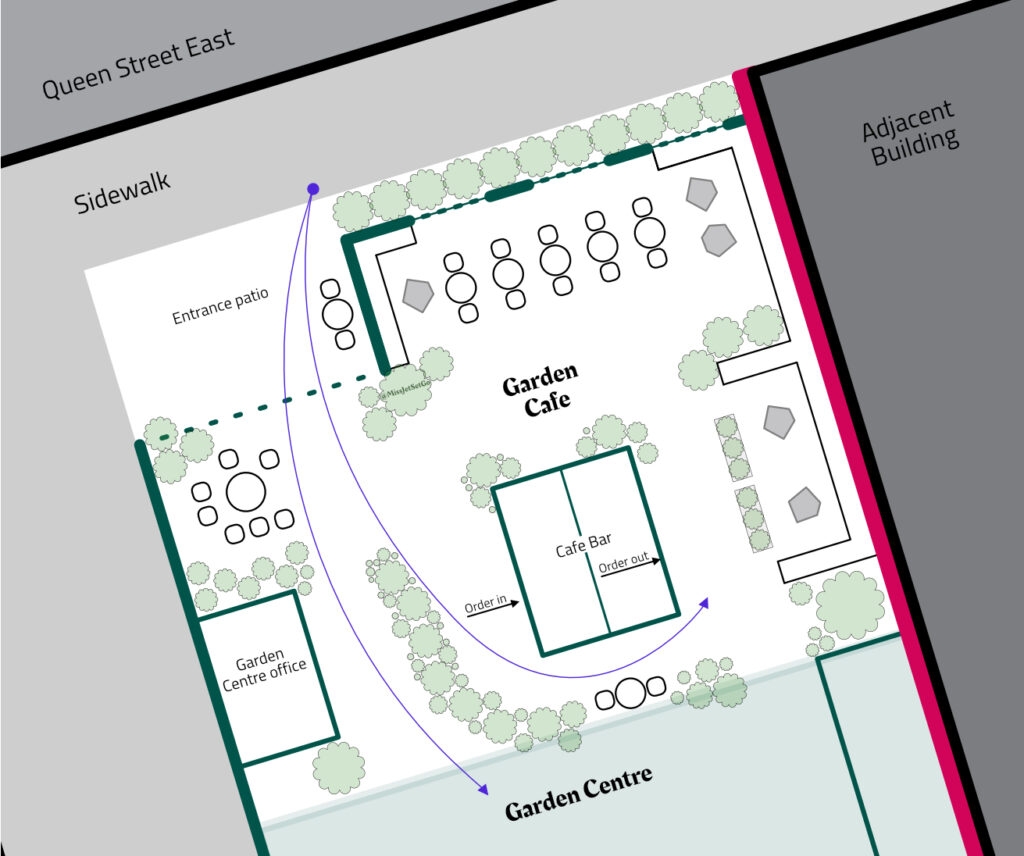
Biophilia
Biophilic design is about the integration of nature or natural patterns into the built environment: real or simulated. This is a bigger topic than I will delve into today, but there is a lot of research supporting the positive impact that biophilic spaces have on our health and wellbeing. Biophilic designs can help us maintain our connection to our circadian rhythm by connecting us to the movement and changes of the sun throughout the day, which helps us maintain our night/day sleep and wake schedules. They also of course impact the environmental qualities of a space, like thermal and auditory comfort, and air quality. And of course, providing access to or views of nature reduces stress and blood pressure, and promotes healing. If you’re interested in this topic, please take a look at the references a the bottom of this article.
Nearly everything in the Queen Garden Cafe is constructed with natural and authentic material: plants, wood, metal, stone, even the lighting is natural daylight. The only exceptions that come to mind are the polypropylene chairs and the turf grass on the roof of the cafe bar, and I think they were rather tastefully applied in a way that adds vibrance to the space.
This is a very sensory experience. You can see the movement of the sun and the changes in the sky as clouds roll past. You can hear birds chirping and watch them hopping around in search of crumbs. You can feel the change in temperature, and the passing breeze on your skin that rustles the leaves nearby.
One element of biophilic design is the concept of prospect and refuge. The idea that we need our backs to feel protected (from surprise attack) while our eyes can survey the land in front of us. The cafe design excels in this too. The seating areas are recessed into corners and against physical barriers, providing both shelter and refuge. The various views and focal points around the space are the prospects. For example, the brick and iron exterior fence with street side hedging provides a both a physical barrier and layered views in either direction. The hedges also provide visual privacy and filter out the sounds of the street beyond.
Pet-friendly details
This is a no-brainer for an outdoor cafe. We all love our furry pals, and of course we all know that dog ownership rose considerably during the COVID-19 pandemic. That translates to more people walking their pups down through the neighbourhoods, and for businesses that can capture these customers, it translates into more sales. The Queen Garden Cafe and Garden Center are pet friendly businesses that have clearly considered the needs of these dog owners in the design of their space. Here’s what they do well:
- An exterior walk-up order window, separating animals from the food prep area.
- Free dog treat dish at the cafe where you place your order.
- Water dish, changed frequently.
- Carabiner clips mounted on the perimeter wall, for guests to clip a leash and free their hands.
Conclusion
The integration of these two businesses is a delight for the senses. They each offer intangible benefits to the other, and while this article focused on the benefits of the garden centre to the cafe, the cafe acts as a living portfolio of work for the garden centre and brings in a high volume of foot traffic that converts into sales revenue for the garden centre. The seasonally responsive design and product offerings keep this experience fresh and make these businesses pillars in the community,
Further Reading
Report: 14 Patterns of Biophilia by Terrapin Bright Green

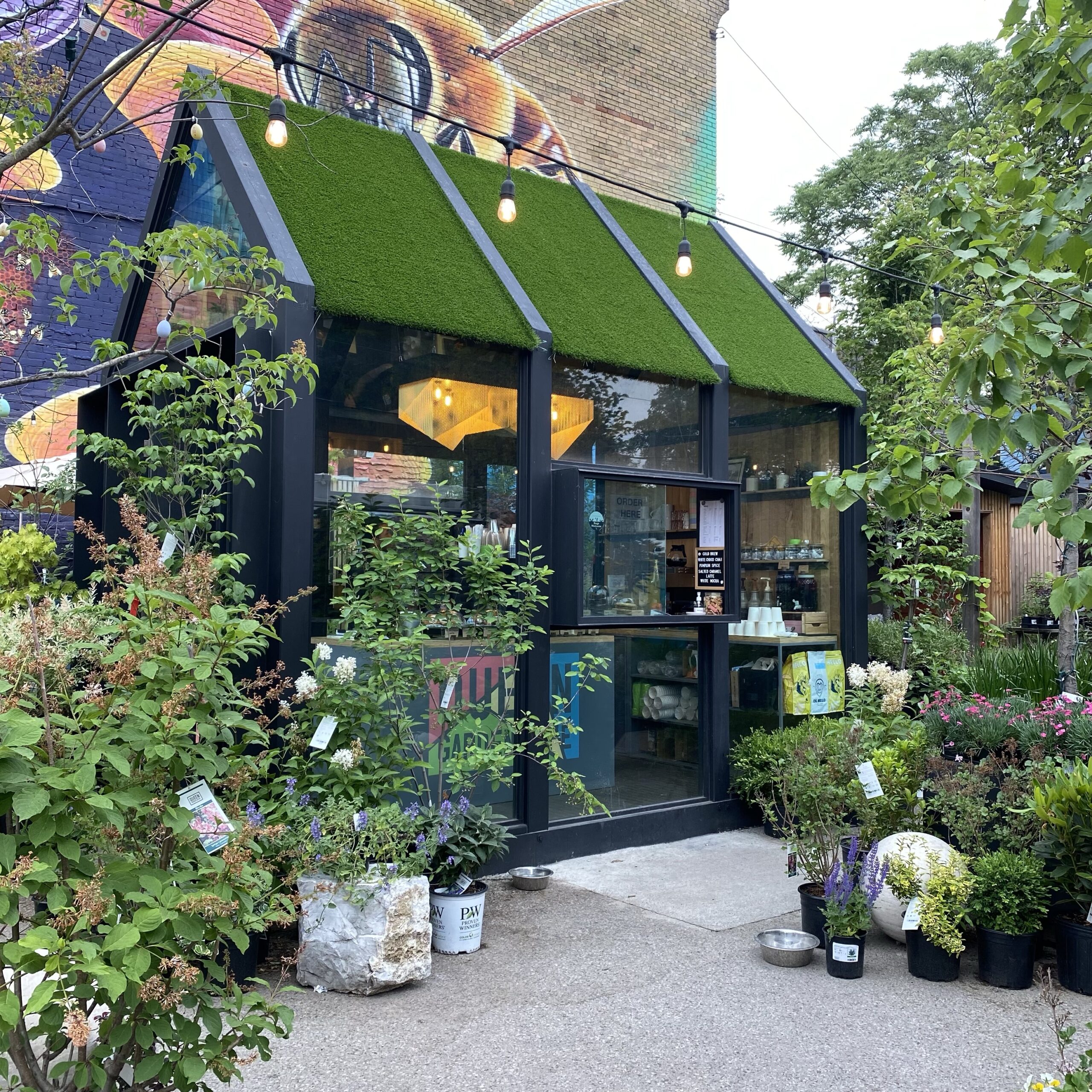
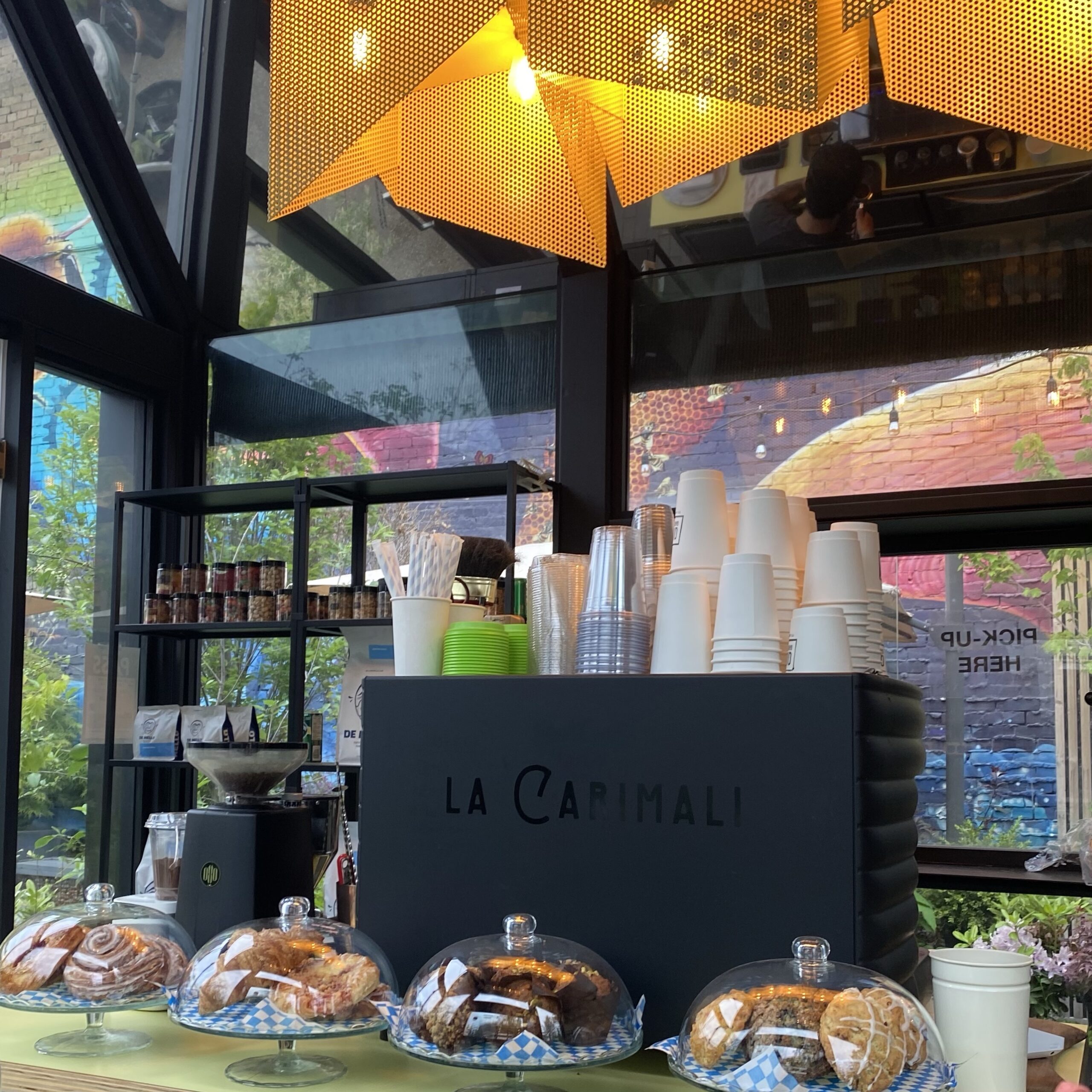
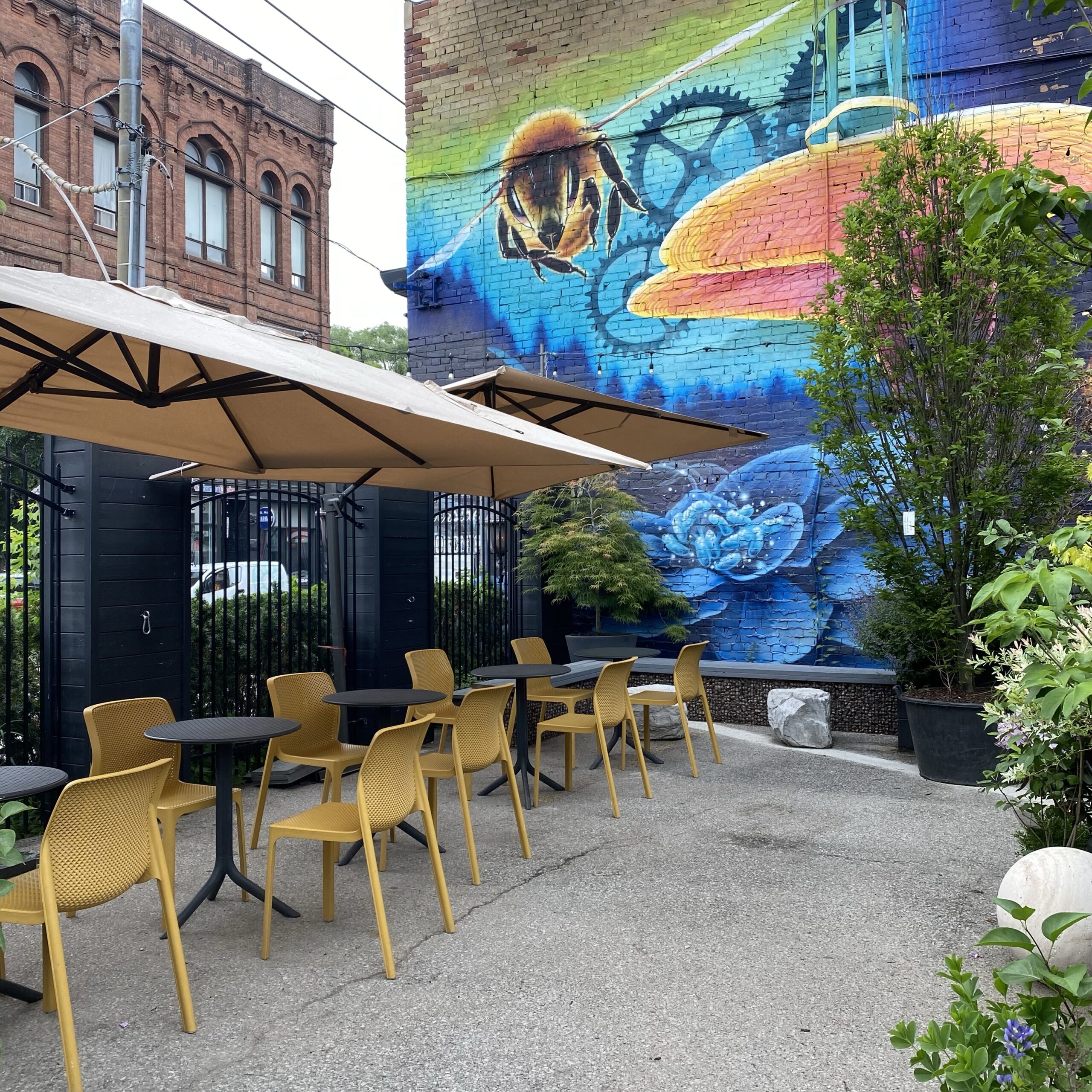
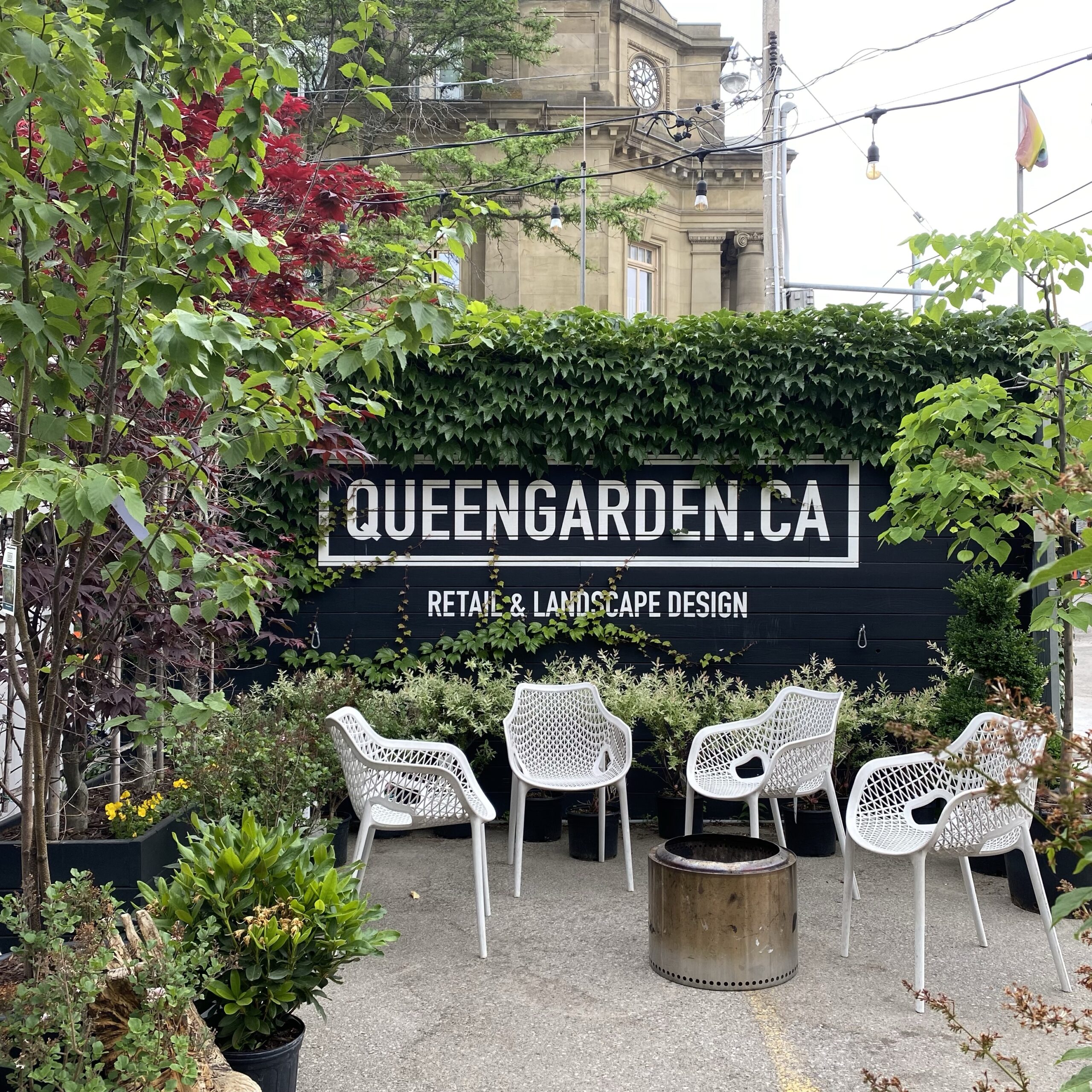
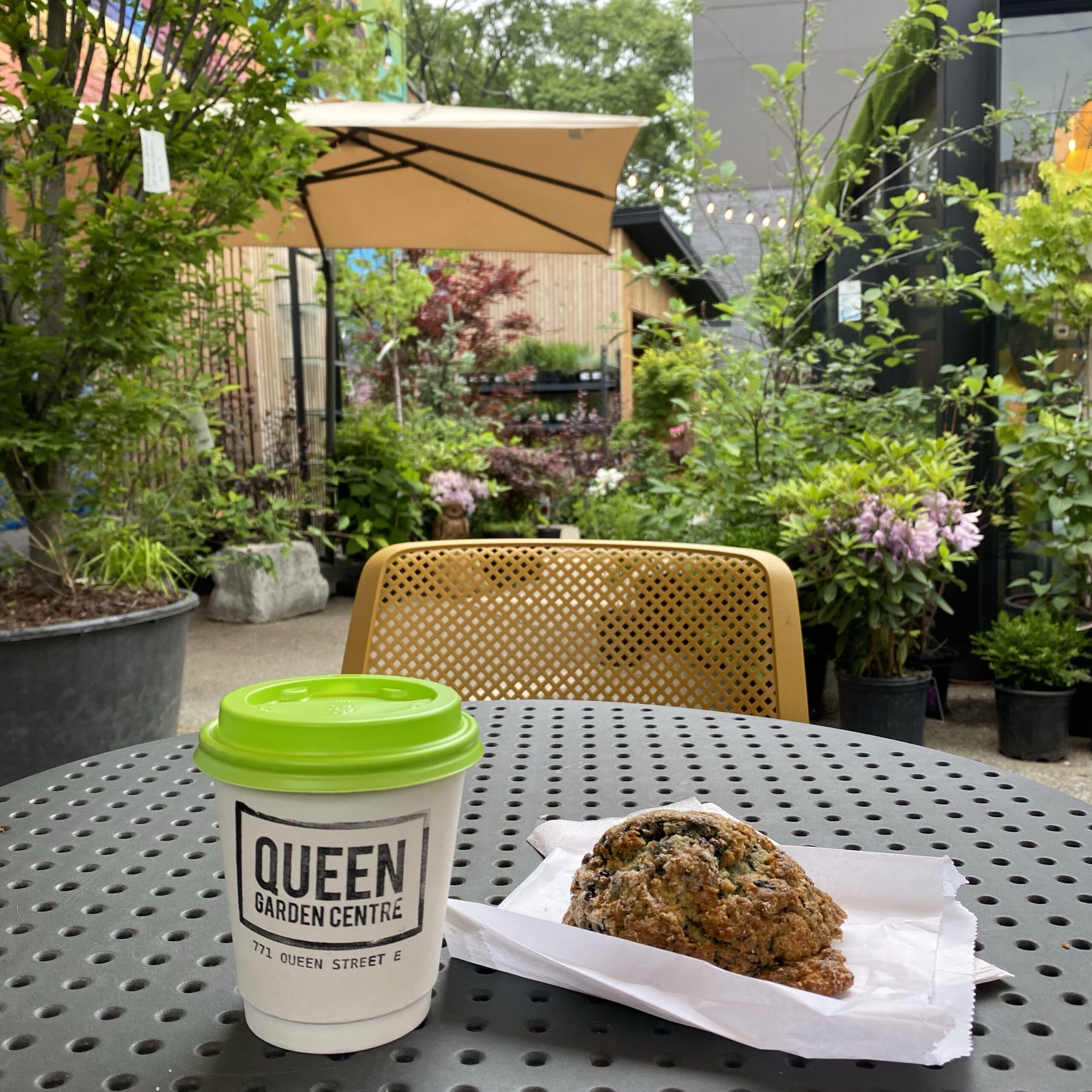
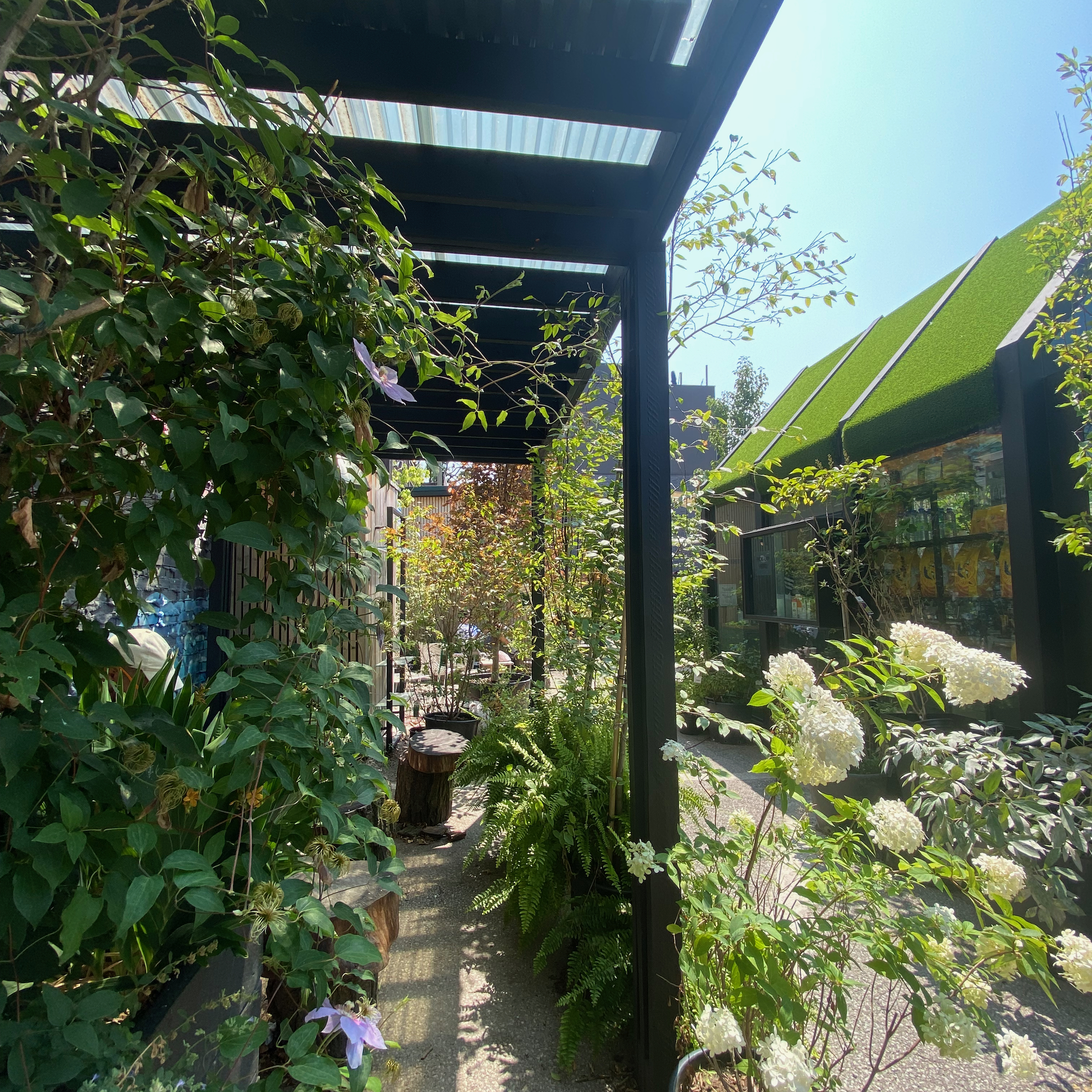
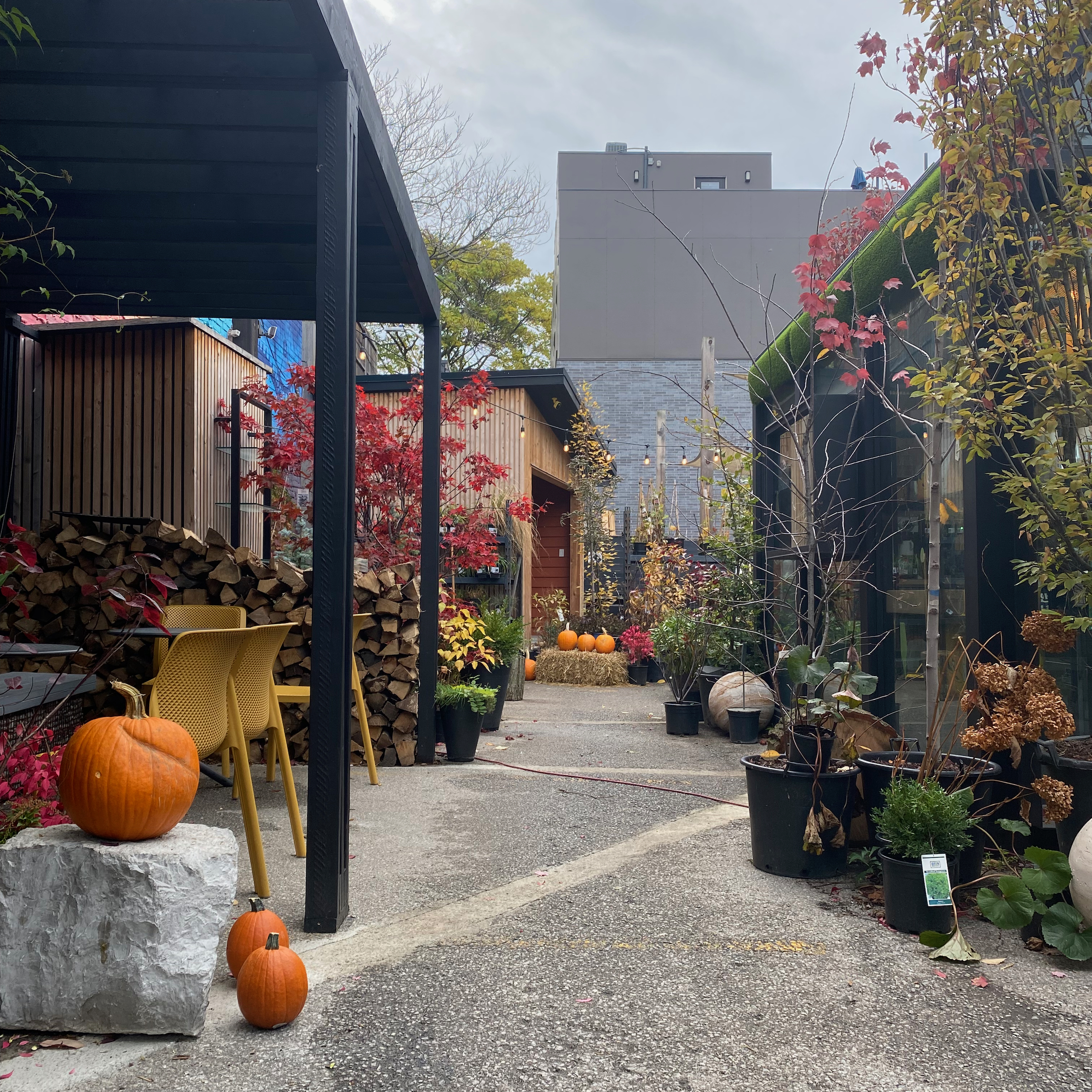
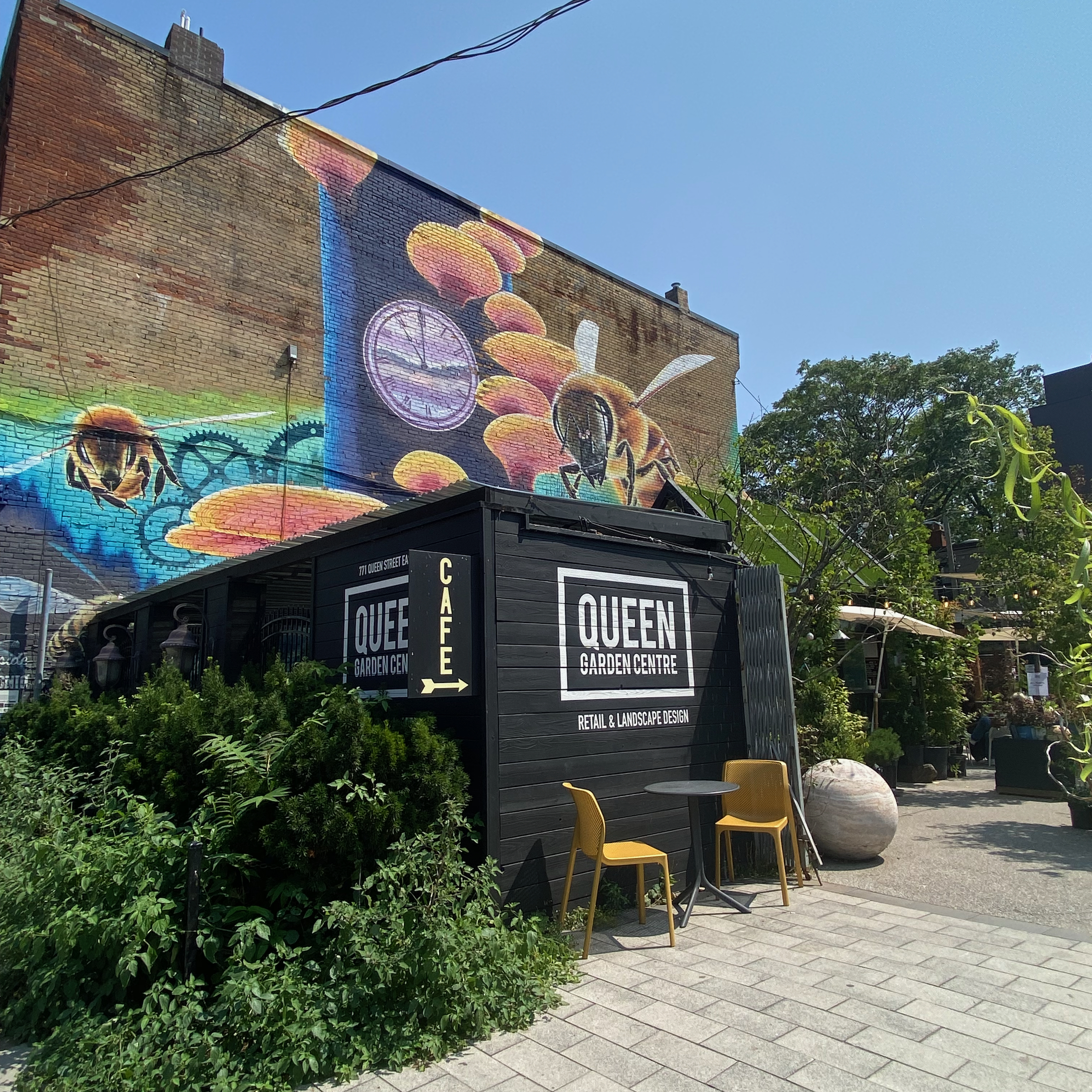
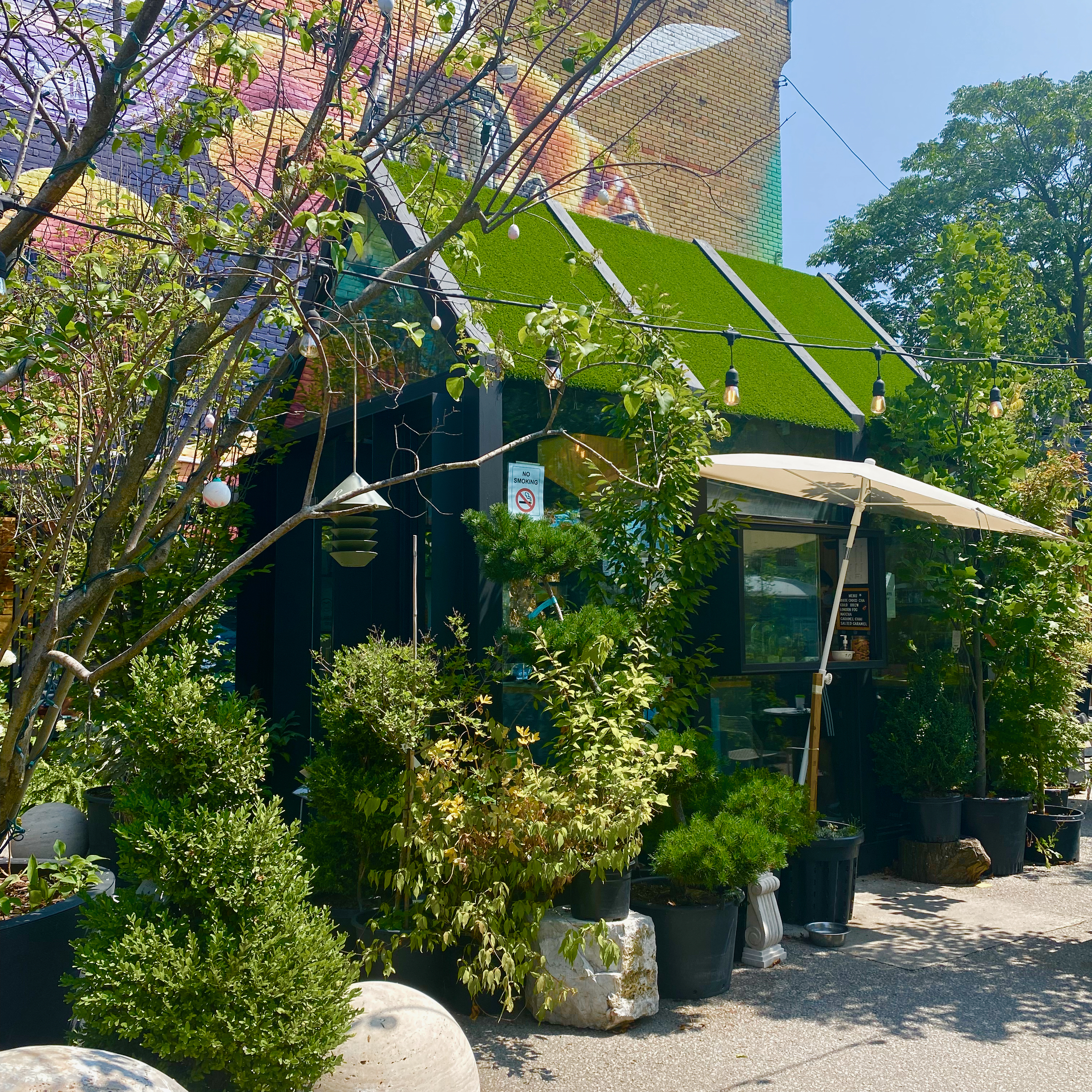
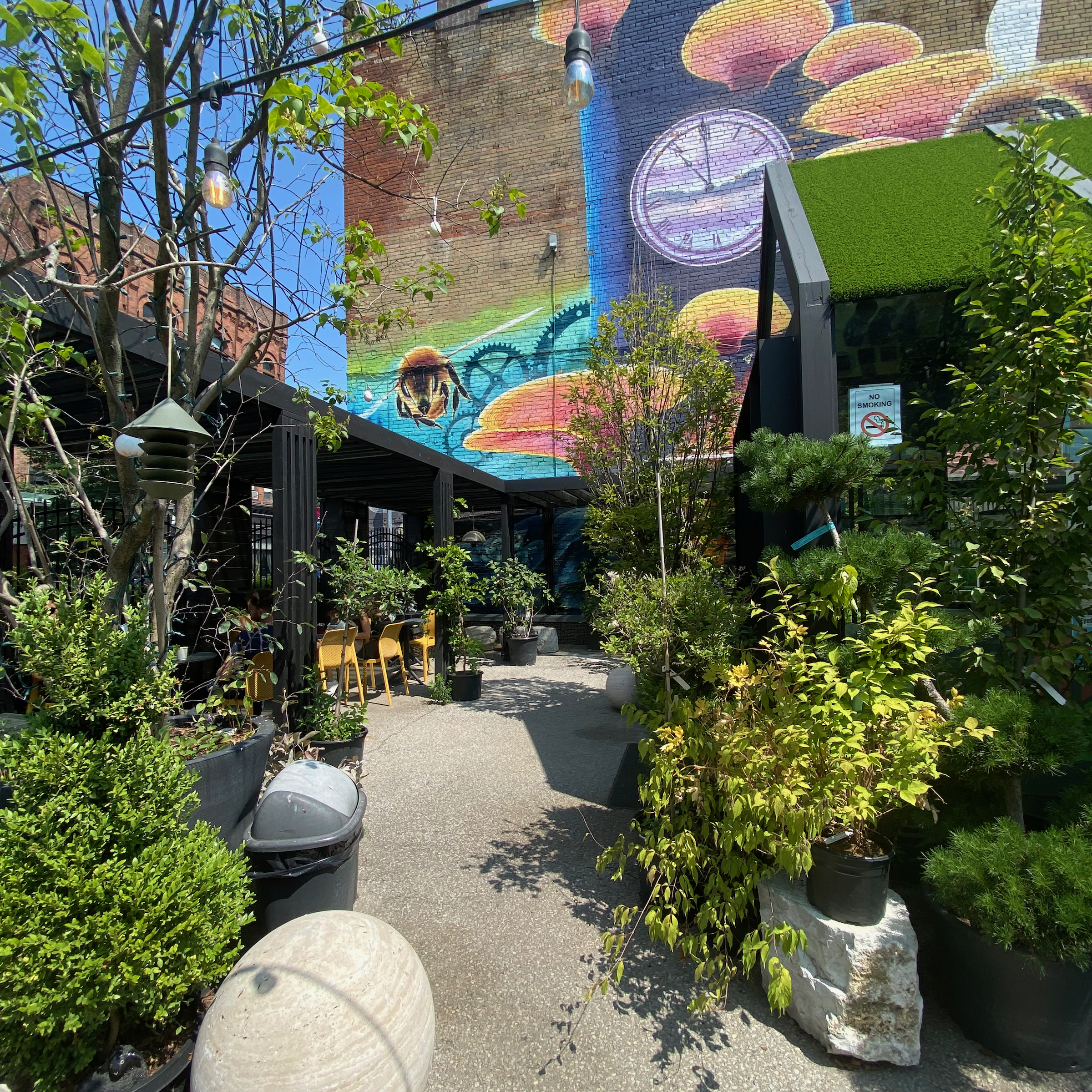
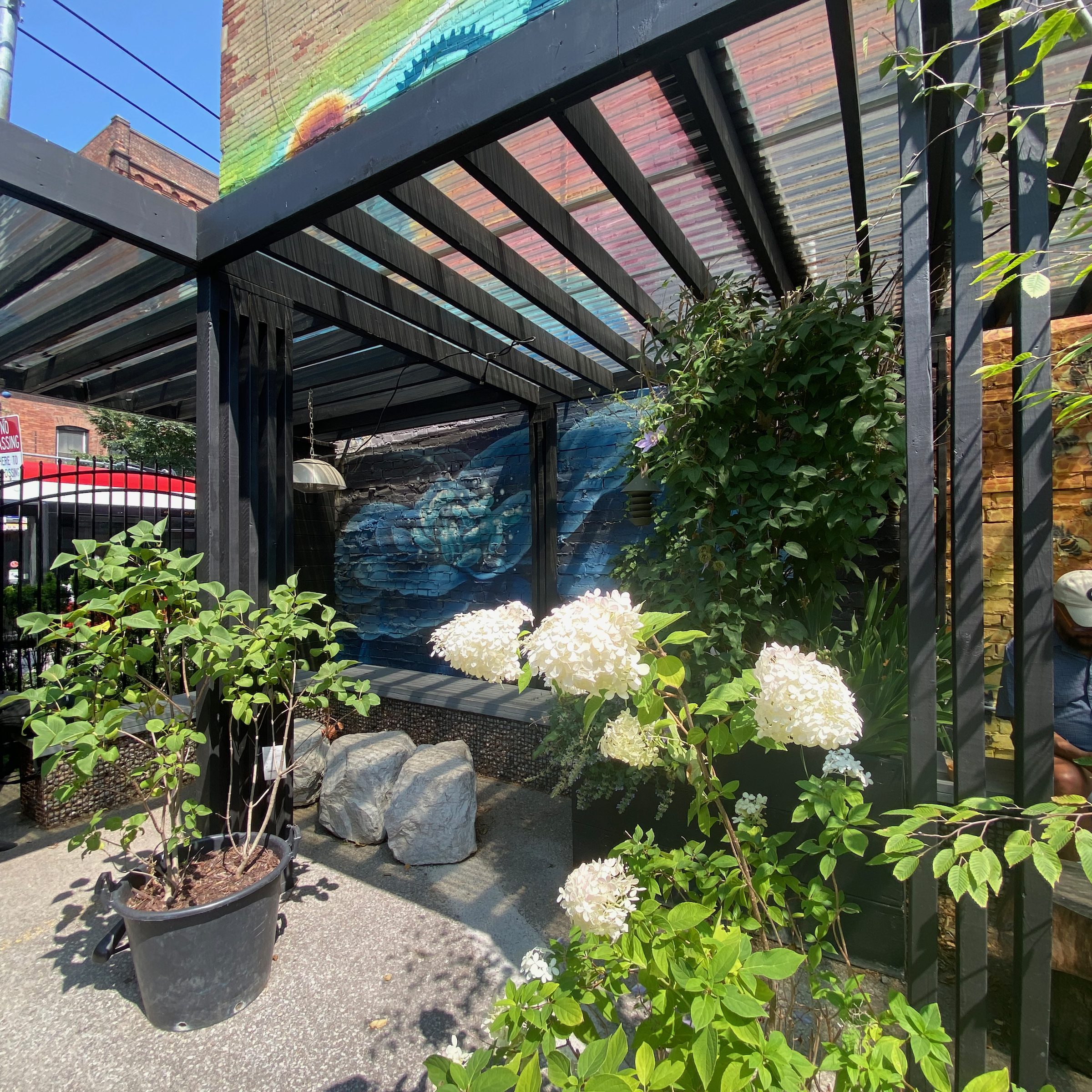
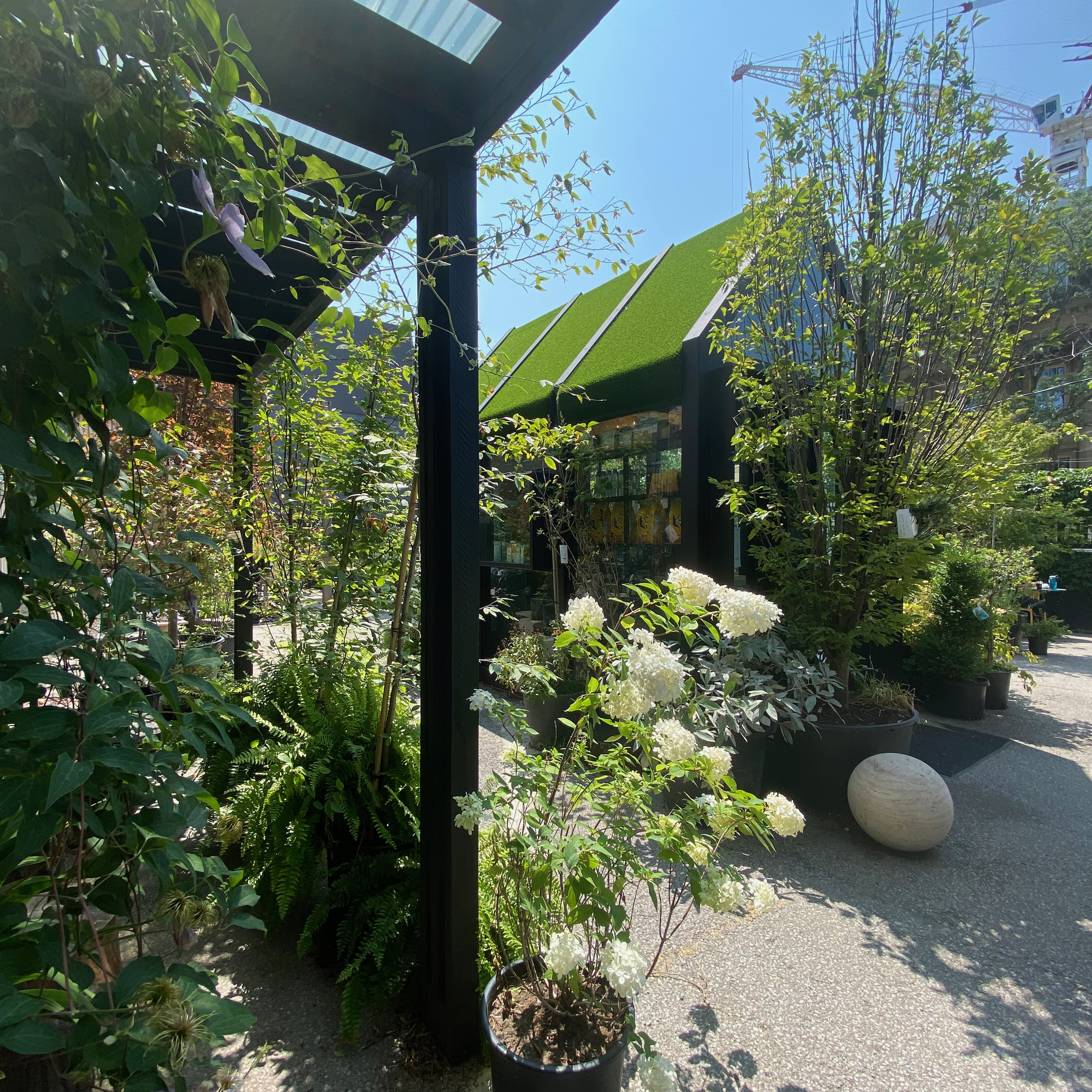
Leave a Comment